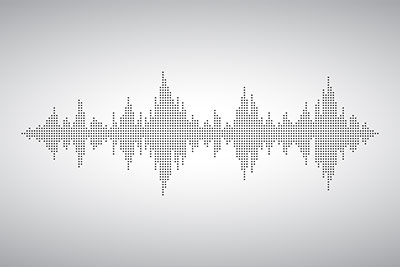ERP is mainly applied to systems where an external antenna is used on intercoms, IFBs, or IEMs. For example, the FCC uses this ERP data to know if a system operates legally or illegally. ERP also helps you to understand how radio waves project into space. The max ERP for FM broadcasting services in the US is 100,000 watts for FM zone II. It is 50,000 watts for densely populated zones. However, the exact restriction depends on the class of license and the HAAT (antenna height above average terrain). Here, we will discuss the ERP radio and its relation to signal strength and transmitter output power.
Contents
ERP Definitions
In all the electromagnetic transmission systems, effective radiated power (ERP) is a theoretical measuring unit of radiofrequency energy in SI unit watts. Mainly, these systems deal with telecoms. You can calculate it by adding system gains and by subtracting system losses.
ERP means effective radiated power/ equivalent radiated power. According to IEEE definition, ERP is the directional radio frequency power that a radio transmitter emits. In other words, the power emitted by a half-wavelength dipole antenna would give the radiation intensity the same as that of an actual source antenna at some remote receiver towards the antenna’s most powerful beam.
In ERP, you measure the transmitter power output and the antenna’s ability to direct that power in a particular direction. It is the product of the antenna’s input power and the antenna gain in a given direction. If the direction is not specified, you can take the direction of maximum gain. In the broadcast industry, ERP helps to calculate the approx. the power that the listeners of a broadcasting station experience in its receiving area.
There is an alternate parameter to measure the same thing. It is an effective isotropic radiated power or EIRP. There is only one difference between ERP and EIRP. You compare the actual antenna with the half-wave dipole antenna in ERP while, in EIRP, you compare the theoretical isotropic antenna half-wave dipole. Now, as the gain of half-wave dipole antenna is 1.64 as compared to an isotropic radiator, thus
EIRP(w)= 1.64* ERP(w)

Image: radio station
Relation to Transmitter Output Power
Let’s understand the effect of transmitter power output on ERP.
According to the law, unlicensed ultra-high frequency microphone systems and In-ear monitor-transmitter output have an output limit of 50mW. In the signal chain, the transmit output is the first step. Further, the signal passes through various physical devices and interfaces. These include cables, amplifiers, connectors, and antennas. All these devices affect the electromagnetic power that radiates into space.
So, if you calculate ERP, it is
ERP= maximum transmitter output power + antenna gain – attenuation – losses due to cable runs and connectors
There is circuitry and amplifiers in the transmitter. These components push the signal towards an output connection. If an IEM transmitter works at 50mW and has no antenna, its output would be around 50mW. When the signal passes through a coaxial cable, it weakens the signal. The amount of cable loss in a signal depends on three factors, namely-
- First, the Transmit frequency
- Second, the length or feet of the cable
- Last, the coax of the cable
You can predict all these variables. Further, you can minimize the loss due to connectors by screwing everything very tight. However, you cannot prevent a slight loss.
The effect of the antenna on ERP depends on the antenna gain. The antenna is like a lens that focuses the transmitter’s energy on a narrow field. Hence, the ERP intensifies as it travels through space. Antennas with high gain tend to increase ERP as they work like telephoto lenses. On the other hand, low gain antennas create no increase in ERP.
The effect of the antenna on ERP is quite dramatic.
Let’s understand this with an example. If you plug a 9bBd CP beam into an IEM transmitter of 50mW output, you will see a drastic change in ERP. The ERP will be around 390mW of power that flies through the air like a concentrated beam of radio waves. However, connection and cables weaken the signal a little bit.

Image: Audio waves and microphones
According to the FCC rules, part 74, both unlicensed and licensed users can use antennas of appropriate gain to the transmitters in the ultra-high frequency band (470-698MHz). There are no rules for ERP emission until and unless the antenna input power of licensed does not exceed 250mW, and that of unlicensed must not exceed 50mW. However, if you use a configuration that interferes with licensed service, you may be at fault.
For the 2.4GHz band, the upper limit of outpower is 1 watt, and ERP is 4 watts. So, be careful when you attach high-gain antennas to 2.4 GHz transmitters.
Relation to Signal Strength

Image: a set of vector sound waves
If the signal travels in the line of sight, i.e., without multipath, you can calculate signal strength S of the radio signal from the EIRP or ERP. This signal strength will be of the main lobe axis at a distance r from the antenna. The signal strength is also indicated as the power flux density in watts per Sqm. now, as the isotropic antenna radiates equal power flux density over an antenna sphere, then
S(r)= EIRP/area of the sphere
Here, EIRP= ERP*1.64
The signal weakens when radio waves travel through the ground, such as indirect paths or skywaves in medium or long-wave broadcasting. The weakening of the signal depends on the terrain it passes through. As a result, the above formula becomes invalid.
Conclusion
To establish the repeater systems, you need ERP. Knowing an antenna’s effective radiator power helps you manage the repeater’s coverage area. If you want help installing microphone systems or transmitters, feel free to reach us. We also provide high-quality cable assemblies to support your plan.





